#Institute of Nuclear Science
Explore tagged Tumblr posts
Text

The deck layout of the SSNR Seaview from Voyage to the Bottom of the Sea.
According to the dates listed above, this vessel would have been in service 52 years by now.
#Yoyage to the Bottom of the Sea#SSNR Seaview#Submarine Ship Research Nuclear#NIMR#Nelson Institute for Marine Research#submarine#Irwin Allen#science fiction
179 notes
·
View notes
Text
Molten Salt Reactors Could Turn Nuclear Waste Into Power—And We Had One Running in 1962.Then we abandoned it

#Anatoli Bugorski#Particle Accelerator Accident#Radiation Exposure#U-70 Synchrotron#Protvino Institute of High Energy Physics#Soviet Science#Human Resilience#Bragg Peak#Radiation Safety#Medical Physics#Proton Beam#Scientific Accidents#High-Energy Physics#Survival Stories#Chernobyl Comparisons#Radiation Medicine#Soviet Union History#Unusual Medical Cases#Nuclear Accidents#Science History
1 note
·
View note
Text
Nuclear power is key to preventing power shortages in the Philippines
If the Philippines is to keep growing economically in the long-term, it needs to have abundant energy and that makes nuclear power essential (for related posts, click here, here, here and here). That being said, the Philippine Nuclear Research Institute (PNRI) recently stated that nuclear power can prevent power shortages in the country, according to a Manila Bulletin news report. To put things…

View On WordPress
#abundance#abundant energy#abundant power#Asia#Bataan Nuclear Power Plant (BNPP)#Blog#blogger#blogging#Carlo Carrasco#clean energy#Department of Science and Technology (DOST)#DOST#economic#economic dynamism#economic growth#economic recovery#economics#economy#Economy of the Philippines#energy#geek#journalism#Manila Bulletin#Metro Manila#news#nuclear energy#nuclear Philippines#nuclear power#nuclear power plant#Philippine Nuclear Research Institute (PNRI)
0 notes
Text
School of Engineering fourth quarter 2024 awards
New Post has been published on https://thedigitalinsider.com/school-of-engineering-fourth-quarter-2024-awards/
School of Engineering fourth quarter 2024 awards


Faculty and researchers across MIT’s School of Engineering receive many awards in recognition of their scholarship, service, and overall excellence. The School of Engineering periodically recognizes their achievements by highlighting the honors, prizes, and medals won by faculty and research scientists working in our academic departments, labs, and centers.
#2024#Awards#honors and fellowships#Biological engineering#Chemical engineering#Civil and environmental engineering#DMSE#Electrical Engineering&Computer Science (eecs)#engineering#Faculty#Institute for Medical Engineering and Science (IMES)#Mechanical engineering#mit#Nuclear science and engineering#Research#school#School of Engineering#Staff
0 notes
Text
Ben-Day Shots - Captain Britain #5
Captain Britain #5 Week Ending Nov 10, 1976Cover Price: 10 pence Characters: Captain Britain / Brian Braddock, Courtney Ross, Hurricane, Jacko Tanner, Chief Inspector Dai Thomas, Sandy York First Appearance: Dr. Neil MacKenzie, Detective Inspector Kate Fraser Content Note: disasters, falling buildings, digging people out of rubble (no pictures), radiation We start with one of those nice…

View On WordPress
#Captain Britain#Claremont-isms#Cops vs Heroes#Courtney Ross#Dai Thomas#Dr MacKenzie#fools at the institute#Hurricane#Kate Fraser#Nuclear Power#Sandy York#science!#secret identity antics
1 note
·
View note
Text
Nakshatra Places
(from The Book of Nakshatras by Prash Trivedi)
Krittika: Places with hot climates; Deserts & Arid lands; Agricultural lands; Cattle ranches; Meadows; Tropical forests; Volcanic areas; Military Bases & testing grounds; Government Buildings; Universities; Rehabilitation Centers; Orphanages; Mines in general; Factories & Industrial areas using fire in one form or the other; Fireplace, Furnaces, Heating devices within homes.

Rohini: Farms, Orchards, Gardens, Agricultural Estates, Places where herbs grow; Bus Stations, Train Stations & Shipping Yards; Ponds & Swimming Pools; Banks & Financial Institutions; Marketplaces; Bars, Restaurants, Hotels; Tourist Resorts; Studios for creative arts of all kinds; Places where gemstones are founds.

Mrigashira: Forests, Fields & Meadows; Deer Parks; Villages and Small Towns; Bedrooms; Playgrounds; Nurseries; Nursery Schools; Recreation rooms; Entertainment places of all kinds; Streets, Footpaths & Roads; Lawns & Gardens; Forest trails; Art & Music studios; Small shops; Markets and other sales places; Astrological & Psychic institutions.

Ardra: Geographical places where natural phenomena like thunderstorms, hurricanes and tornadoes are common; Research laboratories of all types; High tech studios and shops; Hospitals; Communication centers like radar facilities, radio stations, television studios, telegraph offices; Nuclear power plants; All factories dealing with poisonous chemical processes; Escalators; Military bases where weapons are stored & maintained. In today's day and age every home has its share of Ardra because of electrical wirings and appliances.

Punarvasu: Areas near Ponds, Lakes & Rivers; Farmlands; Pilgrimage Spots; Villages & Small Towns; Post offices; Transportation Places like Bus Stations & Train Stations, Airports; Space Stations; Renovated Buildings; Public Parks; Homes; Home Land; Hostels; Hotels, Bed & Breakfast Places, Inns, Motels etc. ; Restaurants; Temples & Treasuries; Markets; Rehabilitation Centers; Missions; Educational Institutions; Public & Political Assembly Places; Roads; Science Museums; Antique Shops; Community Halls.

Pushya: Rivers, Docks, Wells, Reservoirs, Fountains, Pools, Canals; Boats and House Boats; Public Places; Nests; Homes; Breweries; Women's House Quarters, Hostels and Residences in general; Aquariums; Temples & Churches; Hotels & Restaurants; Foster Homes; Child Care Centers; Maternity Hospitals; Schools; Dairy Factories & Dairy Farms; Laundromats; Manors & Public, Government buildings like parliament etc.; Charity Organizations.

Ashlesha: All places where Snakes & Reptiles dwell; Secret service Institutions (CIA, FBI etc.); Hospitals; Law Firms; All Factories dealing with Poisonous Chemical Processes; Drug Stores; Pawn Shops; Sleazy Places where Illegal Prostitution & Drug Peddling thrive; False Cults & Religious Institutions like ISKON etc.

Magha: Deserts; Forests; Capital Cities; Libraries; Museums; Palaces; Ancient Monuments & Sites; Govt. Offices; Residences of Top Politicians; National Monuments; Stages & Performance Halls; Ceremonial Grounds & Buildings; Crematories; Places of Religious, Spiritual Significance.

Purva Phalguni: Hot tropical landscapes; Flowery landscapes; Beaches; Entertainment halls; Exhibition places; Bedroom; Tourist resorts; Spas; Living rooms; Art galleries; Beauty parlors; Markets, especially the kind related to Venusian products; Pretty cottages, buildings and homes.

Uttara Phalguni: Forests; Gardens; Estates; Public Buildings; Government Buildings; Stadiums; Entertainment Halls; Residences of Rich & Famous People; Palaces, Towers, Large Halls; Playgrounds; Cathedrals & other magnificent buildings; Public Assemblies; United Nation's Buildings; Libraries.

Hasta: Agricultural Fields; Grazing Pastures; Home Gardens; Art & Craft Studios; Market Place; Stock Exchange (Wall Street etc.); Casinos; Betting Shops; Amusement parks; Fairgrounds; Factories.

Chitra: Capital Cities; Places of Architectural Importance like "Taj Mahal", "Eiffel Tower", "Empire State Building" etc.; Stages, Performance Halls and Theatres; Places frequented by artisans, merchants, consumers and women; Markets; Trade shows; Wardrobes, Closets.

Swati: High Cliffs; Places where winds blow strongly; Agricultural land; Coral reefs; Marketplaces; Business Centers; Banks; Financial Institutions; Sport Complexes; Airports (both civil & military); Educational institutions; Aeronautical facilities & testing grounds; Computer & Software related centers; Research facilities of all types; Diplomatic enclaves like Embassies, Consulates, etc.; parliament Houses; courthouses; commuter places like Train stations, Bus-Stations, etc.

Vishakha: Rocky Rough Terrains; Mountains; Big Cities like New York; Breweries; Bars; Liquor Shops; Brothels; Theatres; Military Bases; Ceremonial Halls & Grounds; Interrogation Rooms; Warring Grounds; Danger Areas either in the City or designated by the Military.

Anuradha: Forests; Mountains; Caves & Caverns; Lakes; Isolated Landscapes; Old Ruins, Castles, etc.; Stadiums; Metropolis; Technological & Industrial areas; Study & Research Places; Temples & other places used for the Practice and Study of Religion and Occult/Spiritual Topics; Places of Occult Significance; Organization Headquarters.

Jyestha: Hilly Inaccessible Terrain; Hot Tropical Jungles; Government Buildings; All places related to Telecommunications & Media in general; Airports; Hospitals; Military Bases; Capital Cities; Manors, Forts & Palaces; Old-Age Homes.

Mula: Deserts; High Mountain regions where special herbs are found; Dense rainforests & other such inaccessible places; Frozen deserts like Antarctica; Bottom of oceans, lakes, etc.; Hidden subterranean caves; Earth's core & all layers beneath the Earth's surface; Small isolated islands & places; Big institution buildings; Supreme Courts & other courts of justice; Abattoirs; Cremation Grounds and Cemeteries; Places connected to Death & Death Rituals; Agricultural Wasteland; War-grounds; Drought areas; places where mass calamities have taken place.

Purva Ashadha: Oceans; Lakes; Aquarium Parks; Swimming Pools; Docks, ports; shipping yards; Temples; Boats; High Class Estates; Air ports; Luxury Islands & Hotels; Beauty Salons; Amusement Parks; Art Galleries; Music Concert Halls; Places where pompous functions & high society gatherings are held.

Uttara Ashadha: Prairies; Flat Savannahs; Mountainous Forests; National Parks; Wildlife Sanctuaries; Bird Sanctuaries; Reservations; Government Buildings & Grounds; Courts; Temples, Churches and other religious buildings; Universities; College Campuses; Military Bases; Traditionalistic Towns & Cities; Elite Gentlemen Clubs & Societies; Sports Stadiums; Cricket Grounds.

Shravana: Universities; Libraries; Schools; Colleges; Public Auditoriums and other places of public gatherings; Recording Studios; Hospitals; Telephone Companies.

Dhanishta: All places related to music and other creative arts ranging from Schools to Studios to Dance Halls, etc.; Meditation Rooms; Managerial Offices; Real Estate Agencies; Gardens; Science Labs; Factories with high tech equipment or producing high tech equipment; Amusement Centers and Sports Stadiums; All places related to sports; Financial centers and institutions like Banks etc.; Safes where wealth and valuables are stored.

Shatabhisha: High-tech Studios & Environments; Off Shore Drilling Stations; Space Stations; Airports; Observatories & Planetariums; Physics & Chemistry Labs; Bars & Nightclubs especially Techno Clubs; Factories; Hospitals; Nuclear Waste Dumps and Waste Dumps in general; Recycling Stations; Herbal Centers; Water Treatment Plants & Reservoirs; Oceans; Sea-Side; Temples, Meditation, Yoga & Zen Centers; Outer Space; Film & Television Studios; Processing Labs; Hunting Grounds.

Purva Bhadrapada: Cemeteries, Morgues, Cremation Grounds; Factories; Heavy industries of all types; Land Fills; Dark Alley Ways; Centers for Occult Studies and practices of a dark nature; Operation Theatres and Terminal Illness Wards; Asylums and Penitentiaries; Churches; Top Secret Military Research Bases; Atomic Power Plants; Places where high technology equipment is kept; Night Clubs and all other places associated with dark entertainment.

Uttara Bhadrapada: Libraries, Temples & Museums; Occult Book Stores; Ancient ruins; Historical Places; Cremation Grounds; Holy Sites and Pilgrimage Places; Caves; Mountainous Caverns; Meditation Centers; All places suitable for meditation and quiet activities; Charity Organization Compounds; Forests, High Mountain Ranges and other uninhabited solitary places; Bottoms of Lakes, Deep Seas & Oceans; Social Welfare Centers; Centers for Psychic and Spiritual Research.

Revati: Roads, Railroad tracks, Airports; oceans, seas, Beaches; shipping yards; stage; cinema; Orphanages; Monasteries; Ships, Aero-planes, Trains, Cars, etc.; Bus Stations, Transport Industry; Public Auditoriums; Clock Towers/Watch Towers; Light Houses; Driving Instruction Schools.

Ashwini: All places related to Equine professions—Grazing Lands, Stables, Horse Tracks etc.; Hospitals and Places associated with the Medical Profession; Places where Herbs grow; Botanical Gardens; Sporting Grounds; Race Tracks of all kinds; Roads, Railway Track and all other types of Paths meant for Transportation; Military Bases; Research Centers; Technological & Industrial Centers; Health Clubs & Gymnasiums; All places where Initiations and Beginnings are done; Kindergartens & Primary Schools.

Bharani: Extreme Exotic Landscapes; Volcanoes; Areas with Volcanic Soil; Volcanic Tropical Islands like Hawaii and Polynesian Islands; Farmlands; Kindergartens, Nurseries, Nursery Schools; Children Parks; Amusement Parks; Morgues; Cemeteries; Funeral Homes; Maternity & Child Wards in Hospitals; Intensive Care Units; Gynaeology Hospitals; Film & Photography Studios; Exotic Nightclubs; High Courts; Fertility Clinics; Streets and roads with busy traffic.

513 notes
·
View notes
Text

via @salsa-di-pomodoro
I mean...I don't even go here (Modern!AU), but Mystra ("with a 'y'") is the perfect name for an Apple-esque tech company that Gale lived next to as a kid and whose mom was a maid for the CFO, Elminster. And Elminster paid for Gale's scholarships to STEM schools and summer camps so Gale spent his childhood becoming an engineer just so he could work there. And then he shows up and it sucks.
Or the name of an old private university ("Oxford," "Cambridge," and "Mystra").
Mystra as a company or university or science acronym in a super-specific field of study feels WAY more like a goddess than one individual, particularly-shitty ex-wife.
Can we just forget Mystra? We have the ability to write whatever we want, so why Mystra? Why Modern AU with divorcee Gale stuck with Mystra due to fanon child, *insert name here*? Why? He can be free. We have the power.
#MYSTRA is a nuclear power plant facility#and the shitty regulations Gale instituted to maximize quarterly profits gave him radiation poisoning#the fandom needs to lean into the inhuman power-imbalanced aspects of this relationship#Gale feels more like a man devoted to science realizing what science really is#more than someone with one bad experience with a shitty ex-spouse ever could#lean into the inhuman feelings of late capitalism and gods
34 notes
·
View notes
Text
While you were sleeping ...
Federal judge puts back funding to USAID
Federal judge demands US put back health related federal websites
Judge Tanya Chutkan investigating Elon Musk's ability to run DOGE
The Department of Energy blocks firings of hundreds of employees who work for a key agency maintaining the U.S. nuclear weapons stockpile
Federal judge stops Trump from sending detainees to Cuba
Federal judge stops Trump from shutting down Consumer Protection Agency
DOGE now at CMS which covers Medicare, Medicaid, the Children's Health Insurance Program, and the Health Insurance Marketplace and are allied with Rachel Riley who worked at privatizing healthcare under Trump's first term.
Trump seeks to gut the National Oceanic and Atmospheric Administration and privatize the nation's weather reports and news
Judge blocks DOGE from sensitive Treasury Dept payment system, system being studied and re-programmed after DOGE invasion. expected to finish in August 25.
DOGE database on DOGE site found compromised, anyone can open and edit
Hundreds of federal workers illegally 'fired' from FEMA, DHS, CIS, CPA, the Coast Guard, USCIS, DHS' Science and Technology Directorate, the VA, Education and the US Forestry Service as well as half of the CDC Epidemic Intelligence Service, The Indian (Native American) Health Service. Centers for Medicare and Medicaid Services and the National Institutes for Health, HUD and NOAA.
There have been illegal mass firings of 'probationary' federal employees, those who have just taken on jobs up to those who have were hired 2 years ago.
After seven prosecutors quit refusing to give a Trump deal to NYC mayor, prosecutors put into room and all told they would be fired unless a prosecutor signed off on the deal - Eric Adams case has been dropped and as a result, Adams is allowing Trump immigration to invade NYC.
Trump signs order to block funding for schools that mandate Covid vaccines
Trump has already captured funds to house the homeless in NYC that were disbursed by FEMA
Elon Musk has charged the US gov 16 million to hack at government departments so far.
Elon Musk was granted a 400million deal to sell the US gov cybertrucks
Elon Musk is now going after NASA, despite being a contractor for NASA, Trump says Musk will 'police' his own conflicts of interest.
Trump inserts himself into 'negotiations' between Russia and Ukraine, siding with Russia and not guaranteeing that Ukraine will return to pre-war borders.
Apparently at negotiations, US handed President Zelenskyy a note (mafia style) seeking half of Ukraine's mineral rights, which Zelenskyy refused to acknowlege.
at Munich Security Conference VP Vance pushes the right-wing in Europe, shocking and angering NATO allies, changing US policy towards Putin and China. Trump now says there is no US intent to 'beat China'.
FAKE DOGE 'employees' appear in San Francisco city hall demanding access to state systems and data, leaving when confronted.
Trump makes himself head of the Kennedy Center for the Arts many staff resign and many artist pull out of sold-out shows.
#trump administration#illegal federal firings#federal employees#doge#elon musk#donald trump#jd vance#ukraine#russia#china#while you were sleeping#fuck this timeline#democracy#trump overreach#shitler youth#nato#news#federal judges
241 notes
·
View notes
Text

Fallout Protection: What to Know and Do About Nuclear Attack. 1961.
Science History Institute
#artificial respiration#illustration#first aid#emergency#first responders#breathing#breath#1961#1960s#cpr
193 notes
·
View notes
Text
Brian Barrett at Wired (02.27.2025):
If you’ve felt overwhelmed by all the DOGE news, you’re not alone. You’d need too much cork board and yarn to keep track of which agencies it has occupied by now, much less what it’s doing there. Here’s a simple rubric, though, to help contextualize the DOGE updates you do have time and energy to process: It’s worse than you think. DOGE is hard to keep track of. This is by design; the only information about the group outside of its own mistake-ridden ledger of “savings” comes from media reports. So much for being “maximally transparent,” as Elon Musk has promised. The blurriness is also partly a function of the speed and breadth with which DOGE has operated. Keeping track of the destruction is like counting individual bricks scattered around a demolition site.
You may be aware, for instance, that a 19-year-old who goes by “Big Balls” online plays some role in all this. Seems bad. But you may have missed that Edward Coristine has since been installed at the nation’s top cybersecurity agency. And the State Department and the Small Business Administration. And he has a Department of Homeland Security email address and, by the way, also had a recent side gig selling AI Discord bots to Russians. See? Worse than you think. [...] Similarly, you’ve likely heard that the United States Agency for International Development has been gutted and the Consumer Financial Protection Bureau has been put on ice. All true, all bad. But here’s what that means in practice: Fewer people globally have access to vaccines than they did a month ago. More babies are being born with HIV/AIDS. From here on out, anyone who gets ripped off by payday loan companies—or, say, social media platforms moonlighting as payments services—has lost their most capable defender. Keep going. The thousands of so-called probationary employees DOGE has fired included a significant number of experienced workers who had just been promoted or transferred. National Science Foundation staffing cuts and proposed National Institutes of Health grant limits will combine to kneecap scientific research in the United States for a generation. Terminations at the US Department of Agriculture have sent programs designed to help farmers into disarray. On Wednesday, the Food and Drug Administration canceled a meeting that would have given guidance on this year’s flu vaccine composition. It hasn’t been rescheduled.
Don’t care about science or vaccines? The Social Security Administration is reportedly going to cut its staff in half. The Department of Housing and Urban Development is going to be cut by as much as 84 percent. Hundreds of workers who keep the power grid humming in the Pacific Northwest were fired before a scramble to rehire a few of them. The National Parks Service, the Internal Revenue Service, all hit hard. So don’t make any long-term bets on getting your checks on time, keeping your lights on, buying a home for the first time, or enjoying Yosemite. Don’t assume all the things that work now will still work tomorrow.
Speaking of which, let’s not forget that DOGE has fired people working to prevent bird flu and to safeguard the US nuclear arsenal. (The problem with throwing a chainsaw around is that you don’t make clean cuts.) The agencies in question have reportedly tried to hire those workers back. Fine. But even if they’re able to, the long-term question that hasn’t been answered yet is, Who would stay? Who would work under a regime so cocksure and incompetent that it would mistakenly fire the only handful of people who actually know how to take care of the nukes? According to a recent report from The Bulwark, that brain drain is already underway. And this is all before the real reductions in force begin, mass purges of civil servants that will soon be conducted, it seems, with an assist from DOGE-modified, automated software. The US government is about to lose decades of institutional knowledge across who knows how many agencies, including specialists that aren’t readily replaced by loyalists.
Wired has a solid article on how bad the DOGE-ificiation of government has gotten.
#DOGE#Elon Musk#Edward Coristine#Musk Coup#Trump Administration II#Department of Government Efficency
108 notes
·
View notes
Text
Stellarators and Tokamaks, Part 0
Heyo now that I have a bit of breathing room I'm going to write up a series of posts on the history and physics of the two most prominent kinds of magnetic confinement fusion reactors: stellarators and tokamaks. Check my #fusion tag for more on fusion in general.
Anyway, today I'm going to show you a picture and explain where the names "stellarator" and "tokamak" come from. In Part 1, I'll start getting into some actual physics.

(source)
That's a tokamak on the left and a stellarator on the right. Specifically, the stellarator is Wendelstein 7-X at the Max-Planck-Institut für Plasmaphysik in Germany.
The yellow is hydrogen plasma undergoing nuclear fusion (like stellar plasma in a star!), the blue are the magnets and coils, the black arrows (in the tokamak) and green stripe (in the stellarator) show the path of a magnetic field line within the device. I will explain why the field lines do that in Part 1.
So,
What's with those funny names?
The stellarator was invented at the Princeton Plasma Physics Laboratory in 1951 by Lyman Spitzer, who is also the namesake of the Spitzer Space Telescope. The name is a portmanteau – "stellar" as in "stellar" and "-ator" as in "-ator." As a result, I find it very hard to say "stellarator" without dropping into a 1950's radio announcer voice. As in,
"The boys at Princeton have whipped up a brand new atomic reactor! That's right, their "Stellar-Ator" has brought the power of the stars to the good ol' U S of A, right here in scenic Plainsboro, New Jersey!"
"Tokamak" is a portmanteau of "тороидальная камера с магнитными катушками." First built in 1958 at the Kurchatov Institute in the USSR from concepts proposed by Andrei Sakharov, the United States Atomic Energy Commission was never successful at getting American scientists to stop using the Russian word for the device.
So that's Part 0! Stay tuned for some actual science.
243 notes
·
View notes
Text
Things People Seem to Forget About Steve Rogers (aka the past is complex)
Things in the future didn't happen in a vacuum, and while Steve missed a lot of stuff while he was in the ice, he would have seen the roots of things like the Civil Rights, Women's Rights and even LGBTQ+ Rights movements in his time.
While I'm sure Steve encountered a lot of people expecting certain right-wing behaviours from him, due to his birth year and the things he missed in the ice, this doesn't mean he would act that way—even right out of the ice.
But first lets take a look at the things Steve missed and see what he did in fact know:
The atom bomb. Steve never saw the atomic fallout, but what did he see? Hydra bombs literally being flown to his home city. There is also a possibility that as a specialty team, he learned about the German Nuclear Program during the war. His unit was tied to the Strategic Science Reserve, so I wouldn't be surprised if between that, and Hydra's bomb initiatives, Steve was well aware of the potential of a bomb threat. I doubt Steve has clearance to know about the Manhattan project, and I think he would be horrified to learn about the impact of the atom bomb on Japan (especially since he essentially thwarted the same thing from happening to New York) but majorly powerful bombs would not surprise him.
• The Cold War. Steve may not have experience the Cold War, but he grew up surrounded by the outcome of the First World War after the Communist take over of Russia. The debates surrounding Communism, Socialism, and Capitalism aren't new. Steve would have grown up with them and would probably be familiar with American pro-capitalist, anti-communist rhetoric. But would he agree?
Here's some things we know about Steve: He's an artist, he grew up during the Depression which was heavily mitigated by socialist measures, he grew up poor, he grew up disabled. As an artist Steve would be well aware of the debates between the political movements, and with his background, and the success of Roosevelt's New Deal reforms, it would not surprise me if Steve leaned more towards the Socialist side of the scale.
All this to say: Steve would not be unfamiliar with the tension between Russia and the USA. Especially since even though they were allies during the war, there were already concerns that the USSR wasn't so much 'liberating' the countries they drove Germany out of, as putting them under new management.
Steve would be familiar with the tensions underlying the Cold War, and his background might lead him to have a critical view of some of the pro-Capitalist propaganda that came out during the Cold War. While I don't think Steve would approve of Russia's methods and the ultimate outcome of Communism there, I don't think he would approve of the Red Scare Witch Hunt that happened in the States either.
• Civil Rights Movement. While Steve missed the major changes that occurred during the 50s and 60s, he would not be unfamiliar with movements for equality. Steve would also not be unaware of the inequality that minorities faced in his country.
For example:
National Association for the Advancement of Colored People (NAACP) was established in 1909 and is still run today. The NAACP fought and fights against discrimination and advocates for equality.
In the 30s President Roosevelt responded to "to charges that many blacks were the "last hired and first fired," [his administration] instituted changes that enabled people of all races to obtain needed job training and employment. These programs brought public works employment opportunities to African Americans, especially in the North" (Link)
"The first precedent-setting local and state level court cases to desegregate Mexican and African American schooling were decided during [the late 1930s]" (Link)
In 1941 thousands of Black Americans threatened to march on Washington for equal employments rights which pushed Roosevelt to issue an executive order that "opened national defense jobs and other government jobs to all Americans regardless of race, creed, color or national origin." (Link)
The Double Victory or Double V Campaign during the war was an explicit campaign to win the war against fascism in Europe and the war against racism as home.
All this to say, Steve would not be unfamiliar with many of the issues tackled during the Civil Rights Movement of the 50s and 60s.
Not only that, but Steve led a multi-racial special unit during the war during a time of active army segregation. Not only does he have a Black man on his team, but also a Japanese man. This would have most definitely led to backlash from higher command as well as discrimination from other units against Jones and Morita. Steve and the entire Howling Commandos would be explicitly aware of prejudice against two of their members and likely had to fight for them many times.
• Anything space travel. It's true Steve wouldn't know anything about attempts to reach the moon. But there were still several space discoveries he could know about, especially since he and Bucky are clearly interested in scientific discoveries, considering how they went to the Stark Exbo before Bucky shipped out.
Some discoveries:
Hubble's Law: In 1929 Hubble published evidence for an ever expanding universe, and thus provided evidence of the Big Bang theory.
1930: Discovery of Pluto (makes me chuckle to think this is a relatively new discovery for Steve and he wakes up to find it is a dwarf-planet now. You think Millennials are protective of Pluto? I think Steve would be too 😆.)
1937: "the first intimation that most matter in the universe is `dark matter'"
Personally I think Steve would be absolutely amazed by the advances in space travel.
• Women's Rights. Like with Civil Rights, while Steve may have missed the large movements during the 50s and 60s, he was around for the early movements. The 60s movement is called Second Wave Feminism for a reason. This is because there was already many pushes for women equality in Steve's time.
For example:
1920: White women win the right to vote. This means Steve's mother first voted in his lifetime. I feel this alone would make Steve heavily aware of inequality faced by women. (As a side note I feel that Sarah always emphasized voting to Steve since it was such a major development in her lifetime.)
Also in the 20s the Flapper trend rose, along with hemlines. Women's skirts were shorter and they smoked and drank with men. Middle-class and working-class women also worked outside of the home. The 1920s-1930s 'modern' woman is very different from the Victorian vision of a woman in petticoats and skirts.
Early Birth Control movement: Was "initiated by a public health nurse, Margaret Sanger, just as the suffrage drive was nearing its victory. The idea of woman’s right to control her own body, and especially to control her own reproduction and sexuality, added a visionary new dimension to the ideas of women’s emancipation. This movement not only endorsed educating women about existing birth control methods. It also spread the conviction that meaningful freedom for modern women meant they must be able to decide for themselves whether they would become mothers, and when."
1936: A Supreme Court decision declassified birth control information as obscene. Legalised doctor-prescribed contraceptives.
WW2 Watershed: Women serve in the army and work factory jobs. The government establishes universal childcare while women work.
Women also wore pants and form fitting clothes to work in factories. We also see Peggy wearing pants during the last assault on Hydra. While Steve may need to get used to modern fashion, he would already be familiar with the 'morale outrage' over women's clothes in his time, and probably try to manage his surprise in private as well as possible.
• LGBTQ+ Rights. Like with the rest of the equality movements, LGBTQ+ rights movements also started before the late 1900s.
1924: "Society for Human Rights is founded by Henry Gerber in Chicago. The society is the first gay rights organization as well as the oldest documented in America." This organisation was broken up soon after founding due to arrests, but it published "the first American publication for homosexuals, Friendship and Freedom."
In the 1920s and 30s "the gay and lesbian movement started taking shape. Social analysts began rejecting prior medical definitions of "inversion" or "homosexuality" as deviant.
Communities of men and women with same-sex affiliations began to grow in urban areas. Their right to gather in public places such as bars was tenuous, and police raids and harassment were common." (Link)
WW2 Watershed: While many LGBTQ people lived in rural areas or outside 'queer neighbourhoods' the war brought people from all backgrounds together. "As with most young soldiers, many had never left their homes before, and the war provided them an opportunity to find community, camaraderie, and, in some cases, first loves. These new friendships gave gay and lesbian GIs refuge from the hostility that surrounded them and allowed for a distinct subculture to develop within the military."
They still had to hide their identities for fear of persecution and a 'blue discharge', however "Gay and lesbian veterans of World War II became some of the first to fight military discrimination and blue discharges in the years following the war."
It's unclear how much Steve would have known about the gay and lesbian rights movement. But in the comics he has a gay friend Arnie Roth, and there are many meta posts (X X X) about how Steve may have lived in a queer neighbourhood.
And, according to my history professor, gay and lesbian soldiers were often protected by their friends in the army instead of outed. This is not to downplay the discrimination and pain outed veterans faced, but there was a comaraderie and understanding that developed between soldiers that protected many gay soldiers.
• Computer and the internet. The seeds of modern computers began during World War Two. Arguably it began earlier with Ada Lovelace. While technology has changed a lot for Steve, there is a long history of it's development.
Colossus Computer: Kept secret until the 70s, it's unclear if Steve's association with the SSR, Peggy (who was a code breaker before SSR) and Howard, would have led him to know anything about the "the world's first programmable, electronic, digital computer", but we see electric screens and machines being used in Captain America: The First Avenger. So he would know something of those mechanisms.
Also the first American TV was broadcasted in the 1939 World Fair, And since Steve and Bucky are already shown going to a science fair, I believe it is reasonable for Steve to know about the concept of television, though it looks much different in modern day.
• Rise of Neo-Nazis. Steve already saw the rise of fascism in his own country before the war, so while I think he would be horrified and saddened to learn of the Neo-Nazi movement, I don't think he would be surprised.
Because:
Eugenics: A large part of the Nazi campaign, this part of the movement originated and was inspired by the United States Eugenics movement. "It is important to appreciate that within the U.S. and European scientific communities these ideas were not fringe but widely held and taught in universities."
Lobotomies and institutionalisations were part of the treatments for disabled and 'weak-minded' individuals during Steve's time. With Sarah being a nurse it is likely Steve knew of these treatments and more. And as a disabled child of immigrants, I have no doubts Steve brushed up with eugenics beliefs many times.
1939: More than 20,000 people attended a Nazi rally in Madison Square while "[a]bout 100,000 anti-Nazi protesters gathered around the arena in protest".
In the comics Steve canonically has a Jewish friend, Arnie Roth. If he wasn't part of the protests against the Nazi rally, he would have heard about it and known about the rise of antisemitic sentiment in the US before the outbreak of the war.
So Where Does That Leave Us?
Steve has a history of anti-racist behaviour. While he would still have a lot to learn from the Civil Rights Movement and no doubt has unconscious biases he grew up with, he also explicitly builds a multi-racial team that would have led to clashes with systemic racism in the army. This would have inevitably led to him and the Howling Commandos taking an anti-racist stance in protection of their members.
Would Steve say the N-word? Likely not. The N-Word already held negative connotations by the 19th and early-20th century. I doubt Jones would be willing to follow a man who would knowing use the insult. 'Coloured' or 'Negro' were seen as the more acceptable terms. So Steve may use those words at first, instead of 'Black' or 'African-American'. 'Negro' is a controversial term for some Black Americans, so this would be something for him to learn, but he would not purposely by insulting or hurtful. And I believe he would adapt as quickly as possible upon learning.
Steve saw the early steps of many social movements. Given what we know about Steve—artist, disabled, immigrant, poor, raised by a single mom, gay and Jewish friend, potentially lived around queer people, worked with Peggy and smiled when she punched a sexiest, and built a multi-racial team—Steve would not only be aware of the social movements of his time, but he would be happy to learn of the developments after he went into the ice.
While it would take some time for him to learn all the changes that happened, Steve's background would led him to be pleased with the changes in society. This is the opposite of being racist, sexist, and homophobic. Some things might take some adjusting for Steve to get used to, but he is already open-minded and has a frame of reference for many of the social changes that happened.
People sometimes bring up Steve's Catholic upbringing to argue about some beliefs he might have. But while I do think this upbringing would lead to some biases, I think Steve's life experience helped counter, or helped him unlearn some of those biases, even before he hit the ice.
Also, as an Irish-Catholic, Steve would have faced some discrimination of his own. It is most certainly not on the same level as other minorities, and things were better in the 20th century. Being very clear, any discrimination Steve faced for being Irish-Catholic would not be systemic or commonplace like racism. But adding his heritage to the rest of Steve's background helps give us a better idea of why he was already open to social movements like the Civil Rights movement before the ice. And it may have made him already more understanding of LGBTQ+ people, who he may have lived around, even if he grew up being taught certain biases.
Other Things We Forget About Steve
He is quite tech-savvy. While Steve would have a lot to learn, we know he is capable. There are a lot of jokes about his technical know-how in Avengers, but I think he's actually managing very well considering it's probably only been a few weeks or months since he came out of the ice.
Examples:
Deleted scene where we see Steve using a laptop in his apartment. He presses the spacebar to pause a video, which is a keyboard shortcut. So not only can he set up a laptop to watch a video, but he already knows key shortcuts.
Deleted scene where waitress mentions 'wireless'. Steve is confused and thinks she means radio. But I think he actually knows about wi-fi at this point, but probably had never heard it referred to as 'wireless' before. By this point he knows radio is not as common, so his real confusion is why the waitress is offering him 'free radio'. If she had said free wi-fi (the more typical phrase in my opinion) I think he would have understood.
Canon scene of Steve helping Tony fix the Helicarrier engines. This is my favourite evidence because Tony asks Steve to look at the relays and Steve makes a quip that they 'seem to run on some sort of electricity' indicating he is out of his depth. But we never see Tony tell Steve what to do. Steve figures out how to fix the relays himself. Tony is busy with the debris in the rotors and the next thing we see is Steve telling Tony the relays are all good.
Steve is much better at adapting and figuring out technology than we give him credit for. This doesn't mean he won't be anxious or uncomfortable with the sheer amount of stuff he has to learn (especially if everyone keeps making jokes about it to him). But by 2014, it's clear he's already mastered all of it, which is amazing when you think about it, because that's only two years of learning.
Steve is very book smart. In the comics Steve goes to art college, implying he finished high school. Even if he did drop out of high school to work, we know Steve is very smart.
We see him unloading a whole suitcase of books in the barracks before he got the serum.
The mental math is must take to throw the shield at the right angles for it to bounce back is insane.
Steve is also known as a master tactician. So it is clear he has the brains and smarts to run his team during the war. Not only that, but he is not just Captain in name. He actually has that rank, which means he passed the Captain's exam. I also have a feeling he would have needed to pass some kind of evaluation to get the serum in the first place.
We see in Steve's 2014 apartment that his bookshelves are full of history books. Steve is a veracious reader and spends a lot of his time catching up on what he missed. Things he didn't learn or were taught differently growing up would definitely exist, but Steve is actively working to counter that.
Steve would swear. Swearing has been a constant throughout all of history. So too, the backlash against profanity. Even if Steve grew up being told not to swear he would have heard it. And, Steve became a soldier. If he didn't swear before the war, he most definitely picked up some of it then.
I think Captain America isn't supposed to swear, and I think Steve would be aware of this perception of the symbol of him. But I think when Steve is comfortable with people, he would swear. We see in Avengers he doesn't swear, but in Avengers: Age of Ultron, he does.
We joke about Steve and the "Language" line, but I think that line has something to do with Steve's history of being perceived as a symbol and as Captain America since he said it 'just slipped out'. So, while Steve may have been encouraged not to swear growing up, and expected not to swear as Captain America, I fully believe that soldier, veteran, and Irish man Steve Rogers does swear.
Wrap up
I hope you liked this deep dive into Steve's history and character.
I think it can be easy to take the past as a lump sum and view everyone in the past through one lens. We know the past was racist, sexist, and homophobic, so we view everyone from the past that way.
And while it's true things were different back then, people were most definitely fighting for change and aware of the issues. There is also a lot of nuance to the past, and a lot that can be gleaned from what we know about Steve.
It's true that Steve would have a lot to learn when it comes to terminology and specific technology, but I believe Steve's background would prepare him for a lot of the social changes that happened after he went into the ice.
#steve rogers#meta#deep dive#long post#captain america#historically accurate#research#sources cited#early 20th century#20th century history#20th century#social movements#marvel#mcu#please don't tag the other post#no drama please#iykyk#historically accurate steve rogers
352 notes
·
View notes
Text
🧵Meet 15 Jewish Nobel Prize Winners Who Changed History🧵
The Jewish population constitutes just 0.18% of the world (15.3 million out of 8.2 billion), yet approximately 20-30% of Nobel Prize winners in fields like Physics, Chemistry, and Medicine are Jewish. This incredible fact highlights the Jewish community's historic contributions to humanity.
Let’s meet just 15 of the over 200 Jewish Nobel Prize winners.
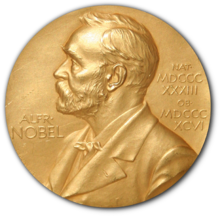
1/ Albert Einstein (1921, Physics).
Einstein was born in Germany to a secular Jewish family. His groundbreaking discovery of the photoelectric effect laid the foundation for quantum mechanics, earning him the Nobel Prize.
▪ His theory of relativity (E=mc²) reshaped our understanding of gravity and spacetime.
▪In 1933, Einstein fled Nazi Germany to the U.S., where he became a vocal advocate for civil rights and Zionism. ▪He helped inspire the Manhattan Project but later became an advocate for nuclear disarmament.

2/ Niels Bohr (1922, Physics).
Born in Denmark to a Jewish mother, Bohr revolutionized atomic physics.
▪His Bohr Model showed electrons orbit the nucleus in distinct energy levels. ▪During WWII, Bohr worked on the Manhattan Project after escaping Nazi persecution. ▪Beyond science, Bohr advocated for global cooperation and peaceful nuclear energy use.

3/ Shmuel Yosef Agnon (1966, Literature).
Born in Galicia (modern-day Ukraine), Agnon immigrated to Ottoman Palestine in 1908.
▪His novels and stories delve into Jewish tradition, spirituality, and the tension between modernity and faith. ▪His acclaimed works include A Simple Story and Only Yesterday. ▪Agnon’s Nobel solidified Hebrew literature's global recognition.

4/ Rosalyn Yalow (1977, Medicine).
Yalow, born in New York to a Jewish family, co-developed radioimmunoassay (RIA), a groundbreaking technique to measure hormones in blood.
▪Her work revolutionized the diagnosis and treatment of diseases like diabetes. ▪Despite gender biases in science at that time, she became the second woman to win the Medicine Nobel.

5/ Baruch Blumberg (1976, Medicine).
Blumberg, a Jewish-American physician, discovered the Hepatitis B virus and developed its vaccine.
▪His research saved millions from liver disease and cancer.
▪Blumberg also served as the first director of NASA’s Astrobiology Institute, exploring life’s origins in the universe.

6/ Lev Landau (1962, Physics)
Born in Baku, Azerbaijan, to a Jewish family, Landau made ground-breaking contributions to condensed matter physics and quantum mechanics.
▪His groundbreaking work on superfluidity explained the behavior of liquid helium at extremely low temperatures. ▪Landau also developed the "Landau-Lifshitz equations," foundational in describing ferromagnetism. ▪Known as a genius in theoretical physics, his "Landau Levels" remain crucial in quantum mechanics.

7/ Richard Feynman (1965, Physics).
Feynman, born to Jewish parents in New York, shared the Nobel for his work in quantum electrodynamics (QED).
▪Known for his brilliance and humor, he revolutionized particle physics with "Feynman diagrams." ▪He contributed to the Manhattan Project and inspired countless scientists through his lectures and books like Surely You’re Joking, Mr. Feynman!

8/ Elie Wiesel (1986, Literature).
A Romanian-born Holocaust survivor, Wiesel wrote Night, a searing memoir of his Auschwitz experience.
▪He dedicated his life to Holocaust education and combating hatred. ▪Wiesel’s Nobel recognized his literary contributions, ensuring the horrors of the Holocaust were never forgotten.

9/ Herbert Hauptman (1985, Chemistry).
Hauptman, a Jewish-American mathematician, co-developed direct methods for solving crystal structures, revolutionizing crystallography.
▪His work paved the way for advances in drug design, enabling scientists to develop life-saving medications. ▪Hauptman’s methods remain foundational in understanding molecular structures in biology and medicine.

10/ Robert Aumann - Yisrael Aumann. (2005, Economics).
An Israeli-American mathematician, Aumann revolutionized game theory, analyzing strategic interactions between rational decision-makers.
▪His work, particularly on "repeated games," has applications in economics, military strategy, and even evolutionary biology. ▪Aumann is an observant Orthodox Jew and has been a vocal advocate for Israel's security and has connected his mathematical insights with the Talmudic concept of fairness and justice. He often reflects on his Jewish heritage in his work and public speeches.
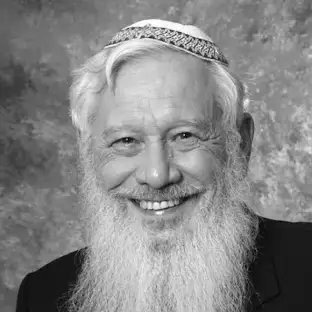
11/ Aaron Ciechanover (2004, Chemistry).
Ciechanover, born in Haifa, Israel, discovered the ubiquitin-mediated protein degradation system.
▪This mechanism explains how cells identify and destroy faulty or damaged proteins, which is essential for maintaining health. ▪His findings have significant implications for treating diseases like cancer, Alzheimer's, and Parkinson's.

12/ Avram Hershko (2004, Chemistry).
Hershko, born in Hungary and a Holocaust survivor, worked alongside Ciechanover on the ubiquitin system.
▪His research showed how proteins are tagged for destruction, which is vital for cellular health. ▪Hershko’s journey from surviving the Holocaust to becoming a Nobel laureate highlights the resilience and brilliance of Jewish scientists.

13/ Daniel Kahneman (2002, Economics).
Kahneman, born in Tel Aviv, is a psychologist whose work transformed economics.
▪He co-authored Thinking, Fast and Slow, exploring how cognitive biases affect decision-making. ▪His prospect theory explained how people assess risk, challenging classical economic theories of rationality.

14/ Ada Yonath (2009, Chemistry).
An Israeli crystallographer, Yonath is celebrated for uncovering the 3D structure of ribosomes, the cell's protein factories.
▪Her work advanced the development of antibiotics targeting bacterial ribosomes, combating antibiotic resistance. ▪Yonath is the first Israeli woman to win the Nobel Prize in Chemistry.

15/ Saul Perlmutter (2011, Physics).
An astrophysicist from Berkeley, Perlmutter co-discovered that the universe’s expansion is accelerating due to "dark energy."
▪His work confirmed the existence of this mysterious force, which makes up about 68% of the universe. ▪Perlmutter’s groundbreaking discovery led to a wave of new theories and observations in cosmology, changing how we understand the cosmos and our place within it.

Conclusion.
Of the 976 individual winners of the Nobel Prize and the Nobel Memorial Prize in Economic Sciences from 1901 through 2024, at least 217 have been Jews or people with at least one Jewish parent, an astonishing 22% of all recipients.
This amazing achievement underlines the huge contribution that the Jewish community has made to world progress in a wide range of areas, from science and medicine to literature and economics.
With only 0.2% of the world's population, Jewish people have continued to shape and inspire the world with intellectual perseverance and innovation, thus leaving a lasting legacy for future generations.
Correction *Jewish population is at 15.8 million.
Correction: Wiesel won for peace.
@AP_from_NY
56 notes
·
View notes
Text
CAN TWO SUPERMASSIVE BLACK HOLES MERGE??
Blog#440
Saturday, September 28th, 2024.
Welcome back,
A team of astrophysicists that includes the University of Toronto’s Gonzalo Alonso-Álvarez has shown that pairs of supermassive black holes can merge together into a single, larger black hole – a major breakthrough in addressing what is known as the "final parsec problem."
longstanding astrophysics problem refers to a discrepancy between the detection of gravitational signals permeating the universe – which astrophysicists previously hypothesized had emanated from millions of merging pairs of supermassive black holes (SMBHs) – and theoretical simulations which showed that the approach of SMBHs stalls when they’re roughly one parsec (about three light years) apart.

Not only did the final parsec problem conflict with the theory that merging SMBHs were the source of the gravitational wave background, it was also at odds with the theory that SMBHs – each billions of times more massive than our Sun – grow from the merger of less massive black holes.
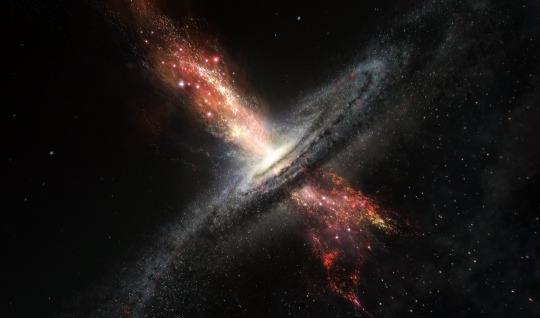
The new research, published in Physical Review Letters, has shown that pairs of SMBHs can indeed break through the one-parsec barrier and merge into a single black hole. This is demonstrated by calculations showing that SMBHs continue to draw closer because of previously overlooked interactions with particles within the vast cloud of dark matter surrounding them.

“We show that including the previously overlooked effect of dark matter can help supermassive black holes overcome this final parsec of separation and coalesce,” says Alonso-Álvarez, a post-doctoral fellow in the department of physics at U of T’s Faculty of Arts & Science and the department of physics and Trottier Space Institute at McGill University, who is first author on the paper. “Our calculations explain how that can occur, in contrast to what was previously thought.”
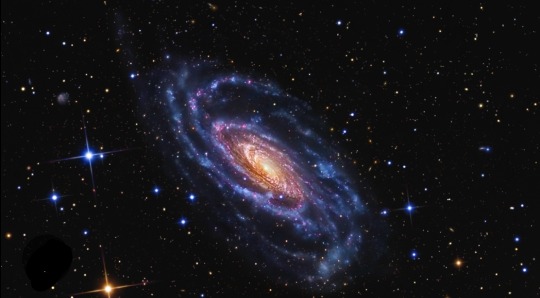
SMBHs are thought to lie in the centres of most galaxies. When two galaxies collide, the SMBHs fall into orbit around each other; as they revolve around each other, the gravitational pull of nearby stars tugs at them and slows them down, causing them to spiral inward toward a merger.
Previous merger models showed that when the SMBHs approached to within roughly a parsec, they begin to interact with the dark matter cloud or halo in which they are embedded. These models indicated that the gravity of spiraling SMBHs throws dark matter particles clear of the system.
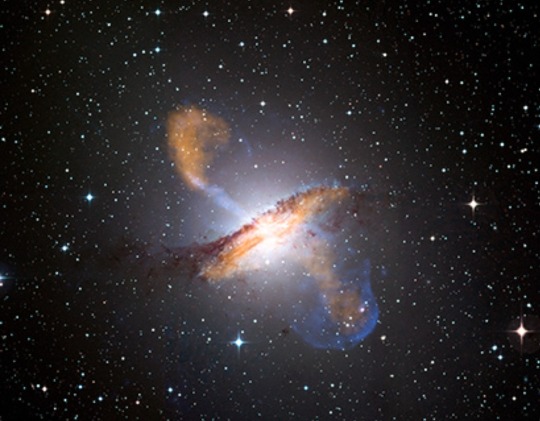
The new model introduced by Alonso-Álvarez and co-authors James Cline, a professor at McGill University and the European Organization for Nuclear Research (CERN) in Switzerland, and Caitlyn Dewar, a graduate student at McGill, reveals that dark matter particles interact with each other in such a way that they are not dispersed. The density of the dark matter halo remains high enough that interactions between the particles and the SMBHs continue to degrade the SMBH’s orbits – clearing a path to a merger.

“The possibility that dark matter particles interact with each other is an assumption that we made, an extra ingredient that not all dark matter models contain,” says Alonso-Álvarez. “Our argument is that only models with that ingredient can solve the final parsec problem.”
The background hum generated by these colossal cosmic collisions is made up of gravitational waves of much longer wavelength than those first detected in 2015 by astrophysicists operating the Laser Interferometer Gravitational-Wave Observatory (LIGO).

Those gravitational waves were generated by the merger of two black holes, both some 30 times the mass of the Sun.
The background hum has been detected in recent years by scientists operating the Pulsar Timing Array. The array reveals gravitational waves by measuring minute variations in signals from pulsars, rapidly rotating neutron stars that emit strong radio pulses.
Originally published on https://www.utoronto.ca
COMING UP!!
(Wednesday, October 2nd, 2024)
"WHERE DID MARS' ATMOSPHERE GO??"
#astronomy#outer space#alternate universe#astrophysics#universe#spacecraft#white universe#space#parallel universe#astrophotography
76 notes
·
View notes
Text









The Princess Royals Official Engagements in February 2025
01/02 As Patron of the Scottish Rugby Union, attended the Six Nations Rugby Match between Scotland and Italy at Murrayfield Stadium in Edinburgh.
04/02 As Patron of Transaid, opened the new offices of Arbuthnot Latham and Company Limited in London. 🏢
Her Royal Highness, As Patron of the Royal College of Occupational Therapists, visited Brent Occupational Therapy and Community Services at Brent Community Centre. 🩺
As Royal Fellow of the Royal Academy of Engineering, attended The Queen Elizabeth Prize for Engineering Winners’ Reception at the Science Museum. 🏆🏗️
Her Royal Highness, As Past Master of the Worshipful Company of Farmers, attended the Company’s Seventieth Anniversary Dinner at Drapers’ Hall in London. 🧑🌾🍽️
06/02 Visited Glenside Hospital Museum at Bristol County Asylum Church to mark its 40th anniversary. 🎂
Visited Southmead Hospital in Bristol. ❤️🩹
07/02 Visited Michael Dennett Boat Builders at Laleham Boatyard in Chertsey. 🛶🛠️
Visited D’Oyly Carte Island Restoration Project in Weybridge. 🏝️
Visited Specialist Group International in Dorking. 🏢
09/02 As Patron of the Scottish Rugby Union, attended the Six Nations Rugby Match between Scotland and Ireland at Murrayfield Stadium in Edinburgh. 🏴🇮🇪🏉
11/02 As Master of the Corporation of Trinity House, attended a Younger Brethren’s Dinner at Trinity House in London. ⚓️🍽️
Unofficial As Chair of the Board of Trustees of the Science Museum, Sir Tim visited Wroughton Science and Innovation Park 🧬🚗
12/02 As Patron of Catch22, visited Include Suffolk Schools Project in Ipswich. 🏫
As Court Member of the Fishmongers’ Company, attended the Court Winter Dinner at Fishmongers’ Hall in London. ❄️🍽️
13/02 As President of the Royal Yachting Association, attended a 150th Anniversary Luncheon at the Corporation of Trinity House in London. 🛥️
14/02 As President of the Riding for the Disabled Association, visited Helen Atkin Group at Buxton Riding School in Buxton. 🐎🏵️
Visited Nuclear Skills Academy in Derby. ☢️🎓
19/02 As Past Master of the Worshipful Company of Carmen, attended a Joint Services Awards Dinner at Plaisterers’ Hall in London. 🍽️
20/02 As Chancellor of the University of London, visited University College London East Campus. 🎓🦾
As Patron of Catch22, visited the Redthread Youth Violence Intervention Programme at St Mary’s Hospital in London. ⛓️
Alongside The King and Queen and the Duke and Duchess of Gloucester, held a Humanitarian Reception at Buckingham Palace. 🌍
As Royal Patron of WISE, attended the Annual WISE Awards Ceremony at the Institution of Engineering and Technology London. 👩💼🏆
24/02 As Vice Patron of the British Horse Society, visited the Stable Mates Plus (Wales) Programme at Lower Stockland Competition and Livery Centre in Cardiff. 🐴🏴
26/02 Visited flood damage on Newerne Street in Lydney. 🌊🫂
Visited Jones Food Company Limited’s Vertical Farm in Lydney. 🧑🌾
Visited Camphill Village Trust’s Taurus Crafts at the Old Park in Lydney. 🪡🧵
27/02 Unofficial Sir Tim attended a luncheon with the Duke of Kent, former President of the Commonwealth War Graves Commission, at the Army and Navy Club, to commemorate His Royal Highness’s Presidency of the Commission. 🫡
Attended a “Table for the Nation” Dinner held by the Woodland Trust in Lincoln Cathedral. 🌲🍽️
28/02 Visited Hornsby Travel in Scunthorpe. ✈️
Visited Nunny’s Farm in Grimsby. 🚜🧑🌾
Total official engagements for Anne in January: 35
2025 total: 62
Total official engagements accompanied/ represented by Tim in January: 0
2025 total: 0
#better late than never i guess :)#aimee’s unofficial engagement count 2025#princess anne#princess royal#tim laurence#timothy laurence#court circular#february 2025
28 notes
·
View notes
Text
Science tumblr! A call to action
My mom works for one of the greatest chemists alive. She takes him to his doctor's appointments and a weekly grocery run. This year, on his birthday, she called him up to wish him a happy birthday, and he was so touched he started crying. His wife is gone, he never had kids, and he lives a pretty solitary lifestyle. My roommate sent him flowers and a balloon the next day because one of the greatest minds on our planet (who is also, yes, a Democrat and an immigrant, he is on the side of the angels in our current climate) to feel so alone on his birthday.
I think we can do one better. I am begging science side of tumblr who understands anything in this wikipedia artist better than me (especially the chemists, calling @brightnshinythings out specifically? You got colleagues who might like to send Jiri a nice letter about his work and how much you appreciate it?)
So, Tumblr chemists and science enthusiasts! Let's make this man who has contributed so much knowledge to our society a less lonely life and let him know his contributions are appreciated, especially in this anti-science time.
If any of you are particularly familiar with his work, I'd especially love if you could send him a card or a letter. Here's some highlights from his Wikipedia article, which i understand none of, but sounds very impressive:
Jiri Jonas is considered a pioneer in the use of magnetic resonance imaging at high pressure, developing techniques to study the dynamic structure of liquids and proteins.[2][3][5] This approach has been used in the study of the arc repressor, a DNA-binding protein containing 53 amino acid residues.[6][7][8] [...] Working in the areas of chemical physics and physical chemistry,[10] Jonas has been particularly interested in reaction kinetics and the behavior of liquids under extreme conditions such as high pressure and extreme heat. He is considered "a pioneer in the use of high-pressure nuclear magnetic resonance and Raman spectroscopy" which he has used to study liquids and their reactions under such conditions.[3] He has developed new experimental techniques involving 1 and 2 dimensional high-resolution and high-pressure nuclear magnetic resonance spectroscopy to study proteins and protein folding.[8][14] Techniques include Raman[15] and Rayleigh laser scattering methods for spectroscopy,[16][17] Fourier transform infrared spectroscopy (FTIR)[18] and photo-chemically induced dynamic nuclear polarization (Photo-CIDNP).[10] "The long-term objective of our work on biochemical systems is to contribute to the understanding of folding of proteins, folding intermediates and structure of pressure denatured states." Jiri Jonas[10] Jonas has been a co-director of the NATO Advanced Study Institute on High Pressure Chemistry, Biochemistry and Materials Science.[11] He has co-edited High pressure chemistry and biochemistry (1987),[14] High Pressure Chemistry, Biochemistry and Materials Science (1993)[19] and High pressure molecular science (1999).[20]
#chemistry#science#science tumblr#chemistry tumblr#jiri jonas#signal boost#y'all love science here let's make a 90 year old scientist happy
25 notes
·
View notes